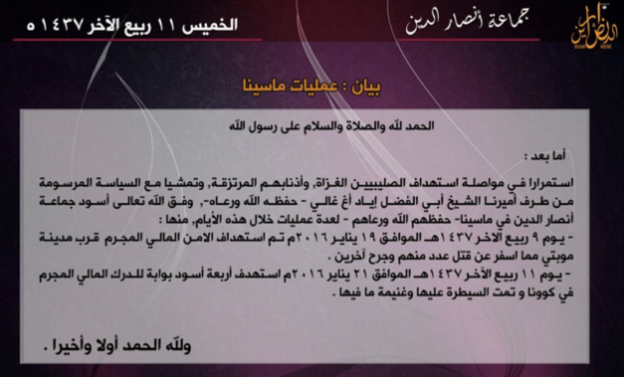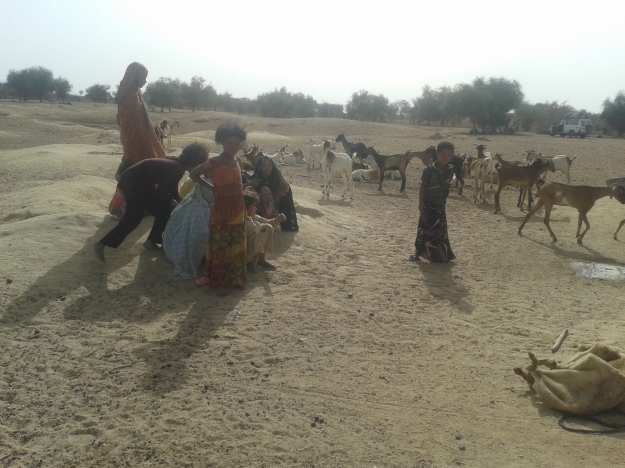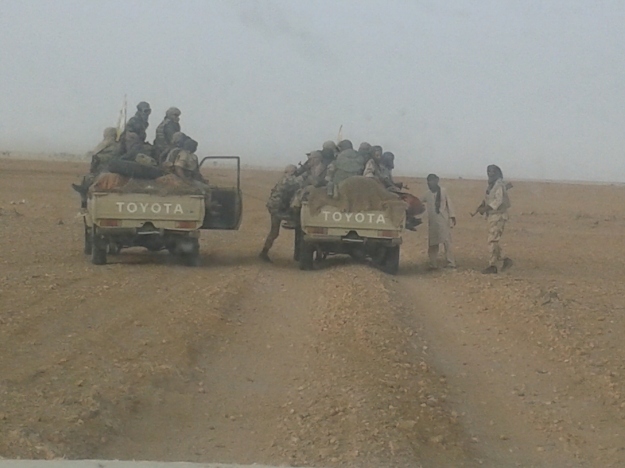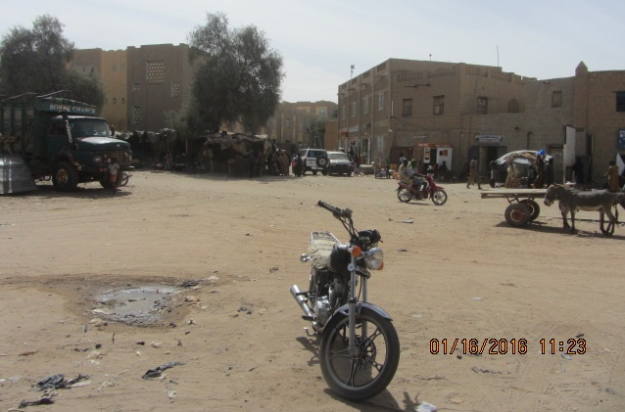By Rida Lyammouri
07 January 2016: Gunmen abducted a Swiss woman identified as Beatrice Stockly in Timbuktu. Al-Qa’ida in the Islamic Maghreb (AQIM) claimed responsibility in a video the group released on January 26th, 2016.
09 January 2016: AQIM released a video of the Swedish and South African hostages. Both hostages were kidnapped in Timbuktu, Mali November 26th, 2011. AQIM demanded not to involved France in the negotiations.
09 January 2016: Yahya Abu al-Hammam, head of katibat Grand Sahara of AQIM in Mali, conducted first interview since the French intervention in Mali in January 2013.
Key points:
- Abu al-Hammam confirmed collaboration between AQIM and Macina Liberation Front (MLF), jihadist group that rose to prominence since January 2015 in Central Mali.
- Abu al-Hammam said AQIM was in contact with Adnan Abu Walid al-Sahraoui, and hoping will return to the right direction. Claiming al-Sahraoui had gone astray in giving allegiance to the so-called Islamic State.
09 January 2016: Malian investigators reported a proof to confirm al-Murabitun to be behind November 20th, 2015 Radison Blu hotel attack in Bamako, Mali. Mali’s chief prosecutor said that a scrap of paper with an Arabic inscription was found on the bodies of the two men that conducted the attack. The note sought the release of two prisoners who are members of al-Murabitun. Katibat Grand Sahara of AQIM, in collaboration with al-Murabitun, already claimed responsibility.
12 January 2016: Unknown gunmen attacked Malian forces checkpoint near Gao. Reportedly, gunmen seized weapons after Malian officers abandoned the post.
13 January 2016: Two men have been indicted on charges of complicity in terrorism for the attack on Radison Blu hotel in Bamako, Mali. The two suspects were arrested November 26th, 2015.
15 January 2016: Gunmen attacked a market in Dioura, Mopti region, killing a guard from the Water and Forests Agency. Members of the MLF suspected to be behind the attack.
15 January 2016: Suspected AQIM gunmen attacked Malian security forces while escorting humanitarian convoy near Goundam, Timbuktu. Two soldiers and two attackers reportedly killed. Three Malian soldiers wounded and three attackers arrested.
15 January 2016 (see statement image below): Ansar al-Din claimed to have targeted and destroyed a French military vehicle north of Kidal killing unknown number of French soldiers. France did not confirm the incident.
19 January 2016: Unconfirmed reporting stated that a MINUSMA vehicle struck an improvised explosive device (IED) near Kidal injuring unknown number of peacekeepers. MINUSMA did not confirm the incident.

19 January 2016: Gunmen killed three Malian gendarmes in ambush in Mopti region. Ansar al-Din Macina branch claimed responsibility.
21 January 2016 (see statement image below): Ansar al-Din Macina branch claimed to have attacked Malian forces checkpoint in Konna and seized weapons.

21 January 2016: Unidentified gunmen targeted weekly market at Bonna commune in Macina Circle. One civilian killed and one gendarme injured.
21 January 2016: Two rockets reportedly fired at MINUSMA camp in Aguelhoc. No casualties reported.
21 January 2016: MINUSMA vehicle struck an IED on Ménaka – Ansongo transit route. No casualties reported.
23 January 2016: Unknown gunmen attacked the residence of the Public Prosecutor in Gao. A guard reportedly returned fire, killing one attacker.
28 January 2016: Malian military vehicle escorting humanitarian convoy struck an IED between Gao and Gossi. Three Malian soldiers killed.
28 January 2016: Malian Army vehicle came under attack by unknown gunmen at a checkpoint east of Timbuktu. One Malian soldier killed.
Additional Security Reporting and Analysis Related to Mali:
- The three AQIM/al-Murabitun members that carried the attack on Splendid hotel and Cappuccino restaurant in Ouagadougou, Burkina Faso are believed to be Malian citizens.
- On 15 January 2016, same day as Ouagadougou attack, Australian couple was kidnapped in Baraboulé, northern Burkina Faso on the borders with Mali. AQIM claimed responsibility.
- On 25 January 2016 Malian forces claimed to have arrested four individuals in Kayes while traveling through Mali then through Niger to allegedly join Boko Haram. The suspects were a Gambian, a Guinean, and two from Guinea Bissau.
- On 27 January 2016, reportedly the MLF distributed leaflets at local mosques in village Kewa, Mopti region. The message was to encourage local parents to send their children to Medrassas. In Mali Medrassa is often used to refer to traditional schools run by local chiefs or religious leaders, and there is no confirmation these schools are encouraging or being a source of radicalization.
- AQIM and Ansar al-Din have stepped up their media presence by releasing high quality videos. Videos included images and recordings of held hostages and attacks against opposed armed groups in the region, like the National Movement for the Liberation of the Azawad (MNLA), and alleged images of destroyed French military vehicles. While many believes this is in competition with the rise of Islamic State, AQIM and allies are doing this mainly for recruitment purposes.
- AQIM and allies while likely to continue to carry small scale attacks on foreign, peacekeeping, and Malian troops, suicide missions similar to Radison Blu and Splendid hotels attacks should be expected. The group demonstrated its willingness to wait as long as it takes to conduct spectacular attacks.






